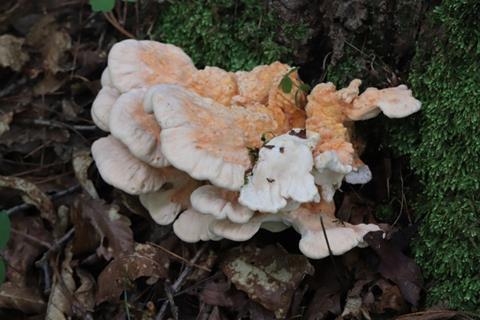Natural compounds from plants and animals have long been used in drug development, but mushrooms remain underexplored despite their rich chemical potential.

Now, researchers from Japan have successfully developed the first method to synthesize inaoside A, a compound derived from the edible mushroom Laetiporus cremeiporus. This achievement will help better understand more of its bioactive properties and pave the way for similar mushroom-derived compounds in pharmaceuticals and functional foods.
Natural compounds derived from plants and animals have long been a source of inspiration when developing drugs and dietary supplements. Many well-established medical substances were derived from compounds isolated from plants, with morphine, aspirin, and paclitaxel being prime examples. Unfortunately, despite their long history of human consumption for their beneficial properties, mushrooms, and their varied chemical repertoire have received much less attention from biochemists.
Against this backdrop, a research team led by Assistant Professor Atsushi Kawamura from the Department of Biomolecular Innovation, Shinshu University, Japan, along with Mr. Tomoya Takao from the Department of Agriculture, Shinshu University, and Dr. Hidefumi Makabe from the Department of Biomolecular Innovation, Shinshu University, set their sights on inaoside A, an α-D-ribofuranoside-type compound they had previously isolated from the edible mushroom Laetiporus cremeiporus. Their study was made available online on October 31, 2024, and was published in Volume 13 Issue 12 of the Asian Journal of Organic Chemistry on December 13, 2024.
Important objective
The motivation behind this study was twofold. “Although the α-D-ribofuranoside structure is frequently found in natural products, there have been fewer reports of the synthesis of α-D-ribofuranosides than of the β-anomers. Thus, the synthesis of α-D-ribofuranosides has attracted much attention from organic chemists,” says Dr. Kawamura. He further adds, “Moreover, the total synthesis of inaoside A is an important objective because its varied bioactivities need to be investigated.”
READ MORE: Endophytic fungi yield vivid colours and vital bioactive compounds
READ MORE: Breakthrough in the synthesis of fungal bioactive compounds for therapeutic applications
To achieve their goal, the research team used an α-selective Schmidt glycosylation as a key reaction. This reaction involves the attachment of a glycoside to another molecule in a specific position and orientation, known as an “α” position. The two molecules that would have to partake in Schmidt glycosylation were determined through retrosynthetic chemistry—an approach where chemists work backward from the desired final product to figure out the necessary starting materials and reactions.
This strategy led the team to two key compounds: an aglycone they could obtain from vanillin and a ribofuranosyl trichloroacetimidate. However, there was a problem: most reported syntheses of ribofuranosides following the general Schmidt glycosylation procedure tend to produce β-ribofuranosides rather than their α versions preferentially.
Different substrate
To overcome this hurdle, the researchers employed a different substrate for the reaction, namely a 2,3,5-tri-O-(tert-butyldimethylsilyl)-protected ribofuranoside substrate. Using this compound, which was easy to prepare and deprotect after the glycosylation reaction, the team successfully produced α-ribofuranoside with remarkable selectivity, attaining an α/β ratio ranging from 4:1 to 5:1.
Being able to synthesize recently discovered naturally occurring compounds is essential to uncover their properties and functionalities. “By elucidating the chemical structures and biological activities of natural products derived from mushrooms, we aim to discover the potential of edible mushrooms as functional foods. These natural products could contribute to advancing pharmaceutical science by serving as pharmaceutical leads,” highlights Dr. Kawamura.
High hopes
Now that it can be readily synthesized, the research team has high hopes for inaoside A. “Further studies on inaoside A, including more detailed investigation of its bioactivities, the synthesis of derivatives, and structure–activity relationship studies, are in progress. We would like to develop this chemical into a socially meaningful compound,” concludes Dr. Kawamura.
Overall, this synthetic chemistry breakthrough not only paves the way for further research into inaoside A’s qualities but also underlines the untapped potential of mushroom-derived compounds. As scientists continue to unlock the secrets of these natural products, the doors will open to novel therapeutic and dietary applications that could benefit human health.







No comments yet